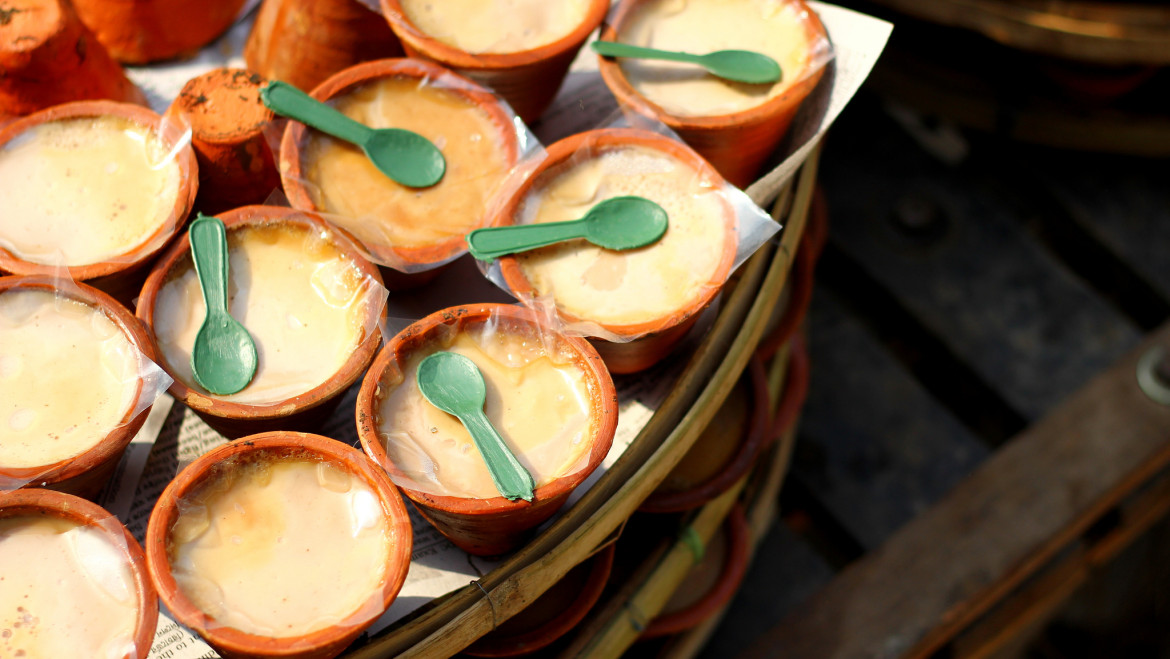
Yogurt Food Source Information
Key Facts
- Yogurt is made from milk cultured with live bacteria.
- Yogurt is consumed in a variety of ways including Greek yogurt, drinkable yogurt, and frozen yogurt.
- The use of pasteurized milk is a key barrier to foodborne pathogen transmission in yogurt products. Raw milk can contain pathogens, such as Escherichia coli, Salmonella spp., and Campylobacter jejuni. The acidity of yogurt is another barrier to foodborne illness. There is evidence of E. coli 0157:H7 exhibiting acid-tolerant properties but this pathogen is readily destroyed via pasteurization.
- Yogurt products have previously been associated with fungal disease.
Introduction
Yogurt is made from milk cultured with live bacteria. The bacteria produce lactic acid, which coagulates the milk proteins, making yogurt thick and slightly sour in flavor. Yogurt can be used as a lower calorie substitute in cooking, to make dips and dressings, or consumed directly.
The bacterial cultures required for making yogurt are Streptococcus thermophilus and Lactobacillus bulgaricus. About 80% of all yogurt manufactured in the U.S. contains an additional culture, Lactobacillus acidophilus, and many commercial yogurt products also contain Bifidobacterium bifidum or Lactobacillus casei because of their potenbtial health benefits.
New York leads the nation in yogurt production, accounting for 15.7% of total U.S. yogurt production, followed by California.
In 2008, per capita consumption of yogurt in the U.S. was 11.8 pounds.
Types of Yogurt
The U.S. Food and Drug Administration (FDA) regulates and inspects commercial yogurt products. The FDA also set the following guidelines:
- Regular yogurt must be no less than 3.25% fat and contain no less than 8.25% milk solids.
- Low fat yogurt must be between 0.5 to 2% fat and contain no less than 8.25% milk solids.
- Non-fat yogurt must be less than 0.5% fat and contain no less than 8.25% milk solids.
Other terms used to describe yogurt are based on differences in processing:
- Set (equivalent to sundae or fruit-on-the-bottom): This is the firmest type of yogurt; during processing the yogurt is set in a container and is undisturbed. Fruit can be added to the bottom of the container so that when turned upside down it resembles a sundae.
- Swiss (equivalent to stirred, custard, or blended): Most commercial yogurts are Swiss-style. After the yogurt is set, it is stirred and dispensed into secondary containers, making it less firm than set yogurt. Fruit can also be stirred in to produce flavor varieties.
- Liquid or drinkable: Liquid yogurt has milk, fruit, and/or fruit syrups added for increased fluidity and flavor. The pH of yogurt is raised when milk is added so the shelf life of drinkable yogurt is generally only 4-10 days.
- Yogurt cheese or strained yogurt: Yogurt is strained to remove liquid whey, resulting in a thick, creamy, concentrated product.
- Frozen yogurt: To make frozen yogurt, regular yogurt is mixed with a pasteurized ice cream mix of milk, cream, and sugar. Other ingredients, such as stabilizers, fruit, and flavors are blended together and then the mixture is frozen. In some cases, frozen yogurt contains live bacteria; the bacteria become dormant when cooled, but regain activity post-ingestion due to the warm body temperature.
- Greek yogurt: Greek yogurt contains about twice the protein and half as much carbohydrates and sodium as regular yogurt. During processing, the yogurt is strained three times, as opposed to two times with regular yogurt, which yields the higher protein content and creamier texture. There are also low fat and fat free options for Greek yogurt.
- Lite or light: Yogurt that is 50% less fat or one-third fewer calories than regular yogurt is considered light.

